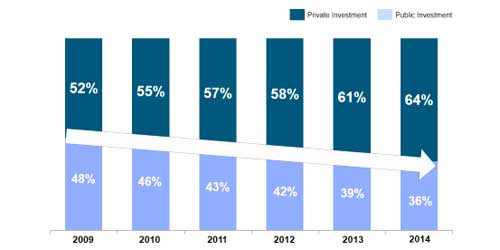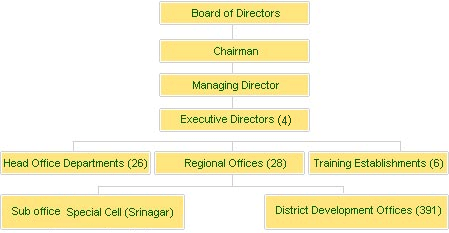Standards and Labelling of Equipment & Appliances
Labelling has been introduced for 16 major energy-consuming appliances, providing users with information on the energy use of a model, and its relative efficiency as compared to others. It has been made mandatory for air-conditioners, refrigerators, distribution transformers and tube lights.
Read Also: Renewable Energy Based Smart Mini-Grid System
Energy Efficiency in Buildings
A national Energy Conservation Building Code (ECBC) has been prepared for the design of new commercial buildings. Over 700 ECBC-compliant buildings are at various stages of construction. Two States have adopted ECBC, making it mandatory for all new, large commercial buildings to comply with the Code. Performance contracting through Energy Service Companies (ESCOs) is being promoted to enable the retrofit of existing buildings so as to reduce their energy consumption.
Energy Efficiency in Industry
467 industrial units from 8 sectors have been declared as Designated Consumers. Together they account for about 35 percent of the total energy consumption in India. Each designated consumer has been prescribed a target percentage reduction in its specific energy consumption to be achieved by 2014-15. Those who exceed their targets would receive tradable Energy Saving Certificates for their excess savings, which could be used for compliance by other designated consumers, who find it expensive to meet their targets through their own actions. A major programme to enhance the energy efficiency of small and medium enterprises is also being launched, focusing on SME clusters, and the development of local consultants, equipment vendors, and financial institutions through replicable pilot projects.
Don’t Miss: National Biotechnology Development Strategy (NBDS)
Residential Lighting
The penetration of energy-efficient compact fluorescent lamps (CFLs) in the domestic sector has been relatively limited because of the high costs of CFLs. The Bachat Lamp Yojana (BLY) provides CFLs to households at the cost of incandescent bulbs. Distribution Companies select qualified investors to sell high-quality CFLs in their region. The investors earn carbon credits due to the lower energy use by the CFLs. The BEE has registered a country-wide Programme of Activities (POA) under the Clean Development Mechanism (CDM) which enables the quick registration of each investor-led project as a CDM project under the POAs. Currently, over 20 million CFLs have already been distributed under the BLY programme.
Energy Efficiency in Agricultural Pumping
Replacement of inefficient agricultural pumps by efficient pumps is enabled through the performance contracting mode. Pumps on designated feeders (which have no other loads) are evaluated for their current energy consumption, and then the existing pumps are replaced with efficient pumps by an ESCO. The resultant energy savings are evaluated, and the ESCO is paid a share of the savings. Six pilots have been launched to assess the viability of this model.
Also Read:
EESL Under DELP Distributes 5 Crore LED Bulbs










